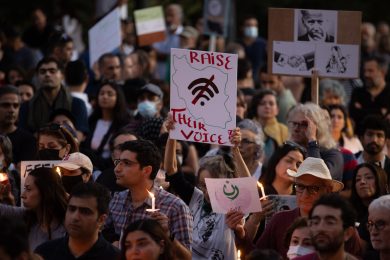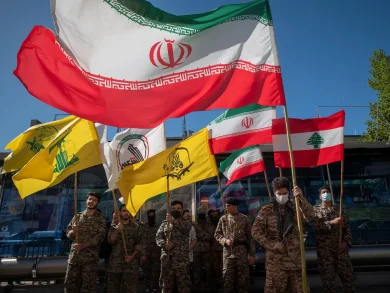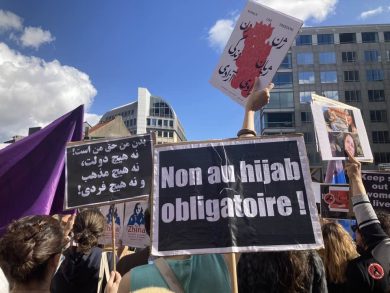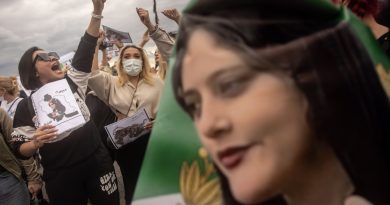In recent years, Iran has witnessed a surge in youth-led activism challenging the Islamic Revolutionary Guard Corps (IRGC) and the regime it protects. This emerging movement is driven by a generation deeply frustrated with systemic corruption, economic hardships, social restrictions, and political repression—all compounded by the IRGC’s central role in enforcing the regime’s oppressive policies. This analysis examines the dynamics between Iran’s youth movement and the IRGC, exploring the motivations, strategies, and challenges of this generational struggle for change.
The Youth Movement: A Generation at a Crossroads
Iran’s youth, which constitutes a significant portion of the population, is uniquely positioned to push for societal transformation. This generation has grown up in the shadow of the Islamic Republic, experiencing its failures firsthand. Several factors fuel their discontent and activism:
1. Economic Hardships
• Unemployment and Inflation: Despite being well-educated, many young Iranians face high unemployment rates and declining living standards. The IRGC’s control over much of the economy exacerbates inequality and stifles opportunities.
• Sanctions and Corruption: While sanctions have crippled Iran’s economy, the IRGC’s monopolistic practices and corruption have diverted resources from public welfare to military and political projects.
2. Social Restrictions
• Suppression of Individual Freedoms: Strict enforcement of dress codes, gender segregation, and restrictions on cultural expression alienates many young Iranians who seek greater personal freedom.
• Cultural Disconnect: The regime’s conservative values often clash with the aspirations of a more globally connected, tech-savvy youth.
3. Political Repression
• Lack of Representation: Iran’s political system offers little space for meaningful youth participation, fueling frustration and calls for reform.
• Crackdowns on Activism: The IRGC’s violent suppression of protests and dissent has radicalized many young Iranians, pushing them to seek more profound systemic change.
The Role of the IRGC in Suppressing Youth Activism
The IRGC is the primary enforcer of the regime’s policies and a central actor in quelling dissent. Its methods include surveillance, intimidation, arrests, and violence, which it employs against youth-led movements.
1. Surveillance and Censorship
The IRGC employs advanced surveillance technologies to monitor communications, social media activity, and gatherings. This stifles organizing efforts and creates an atmosphere of fear.
2. Violent Crackdowns
The IRGC has been at the forefront of suppressing protests, such as those in 2019 over fuel prices and in 2022 following the death of Mahsa Amini. Security forces under its command have killed hundreds of protesters, many of them young people.
3. Imprisonment and Torture
Thousands of young activists, students, and journalists have been arrested and subjected to harsh treatment in IRGC-run detention centers. Arbitrary detentions and coerced confessions are routine.
Youth Resistance: Strategies and Tactics
Despite the IRGC’s heavy-handed repression, Iran’s youth continue to resist through innovative and courageous tactics.
1. Protests and Public Demonstrations
Large-scale protests, such as those following Mahsa Amini’s death in 2022, showcase the youth’s willingness to confront the regime directly. These movements often focus on issues like women’s rights, economic justice, and political reform.
2. Digital Activism
Tech-savvy youth use social media to mobilize, share information, and expose the regime’s abuses. While the IRGC imposes internet shutdowns, activists find ways to bypass restrictions using VPNs and encrypted apps.
3. Artistic Expression
Music, graffiti, films, and literature serve as tools for dissent, allowing youth to challenge the regime’s narrative and foster a culture of resistance.
4. Underground Networks
Activists form decentralized, underground networks to organize protests and evade IRGC surveillance. These networks often rely on trusted personal connections and encrypted communication.
The Role of Women in the Youth Movement
Women have been at the forefront of Iran’s youth-led activism, challenging both the IRGC and the regime’s patriarchal policies. Key aspects of their involvement include:
• Protests Against the Hijab Mandate: Women’s defiance of mandatory hijab laws symbolizes broader resistance against state control over individual freedoms.
• Leadership Roles: Women often play leading roles in organizing protests, raising awareness, and documenting abuses despite facing severe repression.
• Global Solidarity: Iranian women’s struggles have inspired international movements, amplifying their cause and pressuring the regime.
Challenges Facing the Youth Movement
While Iran’s youth are determined to bring about change, they face significant obstacles, including:
1. The IRGC’s Repressive Capabilities
The IRGC’s vast resources and advanced surveillance technologies give it the ability to suppress dissent with ruthless efficiency.
2. Limited International Support
Global attention often wanes after major protests, leaving activists vulnerable to retaliation. Additionally, international sanctions, while targeting the regime, often exacerbate economic hardships for ordinary citizens.
3. Internal Divisions
Differences in goals, strategies, and ideologies among opposition groups can hinder the movement’s cohesion and effectiveness.
Opportunities for Change
Despite these challenges, the youth movement presents a genuine opportunity for systemic reform in Iran. Several factors work in its favor:
1. A Unified Generational Vision
Iran’s youth share common grievances that transcend ethnic, religious, and gender divides, creating a powerful base for collective action.
2. International Solidarity
Global campaigns, sanctions targeting the IRGC, and support for human rights organizations can bolster the movement’s efforts and increase pressure on the regime.
3. Growing Public Discontent
The regime’s inability to address economic, social, and political issues has eroded its legitimacy, creating opportunities for broader coalitions demanding change.
The Future of the Struggle
The clash between Iran’s youth and the IRGC is not merely a generational conflict but a battle for the country’s future. While the IRGC remains a formidable obstacle, the resilience and creativity of Iran’s youth offer hope for a more open and just society.
Real change will require sustained domestic resistance and robust international support. Governments, NGOs, and activists worldwide must amplify the voices of Iran’s youth, hold the IRGC accountable, and push for policies that prioritize human rights and democratic values.
Conclusion
The youth movement in Iran represents a profound challenge to the IRGC and the authoritarian regime it upholds. Despite facing severe repression, young Iranians continue to demand change through protests, digital activism, and cultural resistance. The international community must stand with them, recognizing that their fight is not just for Iran but for the universal values of freedom, justice, and human dignity. By amplifying their voices and holding the IRGC accountable, the world can support a generation determined to shape a brighter future.
Join Our Newsletter!
Stay informed with the latest updates, news, and ways to take action in the fight for justice and global security. Sign up now to get updates delivered straight to your inbox!





